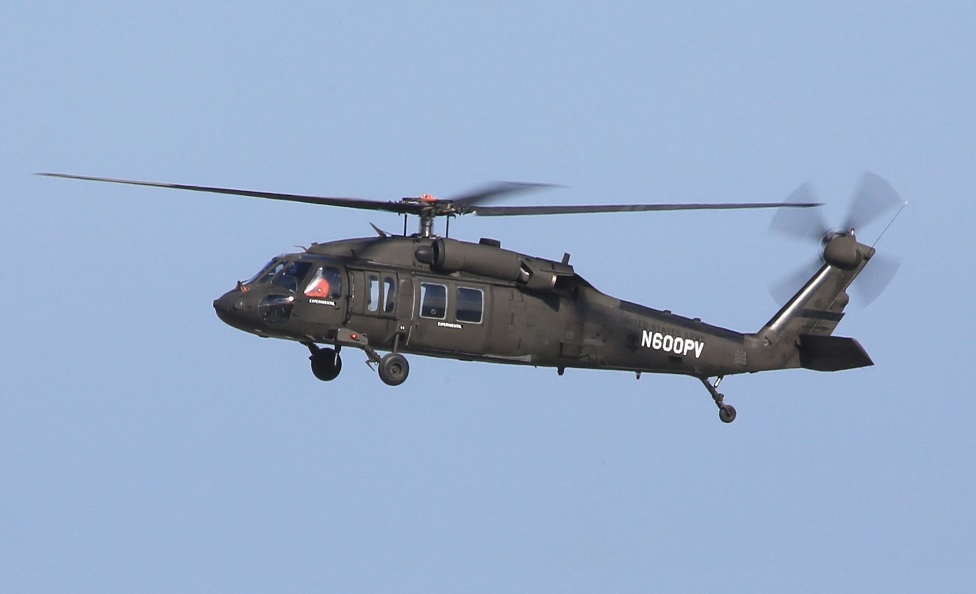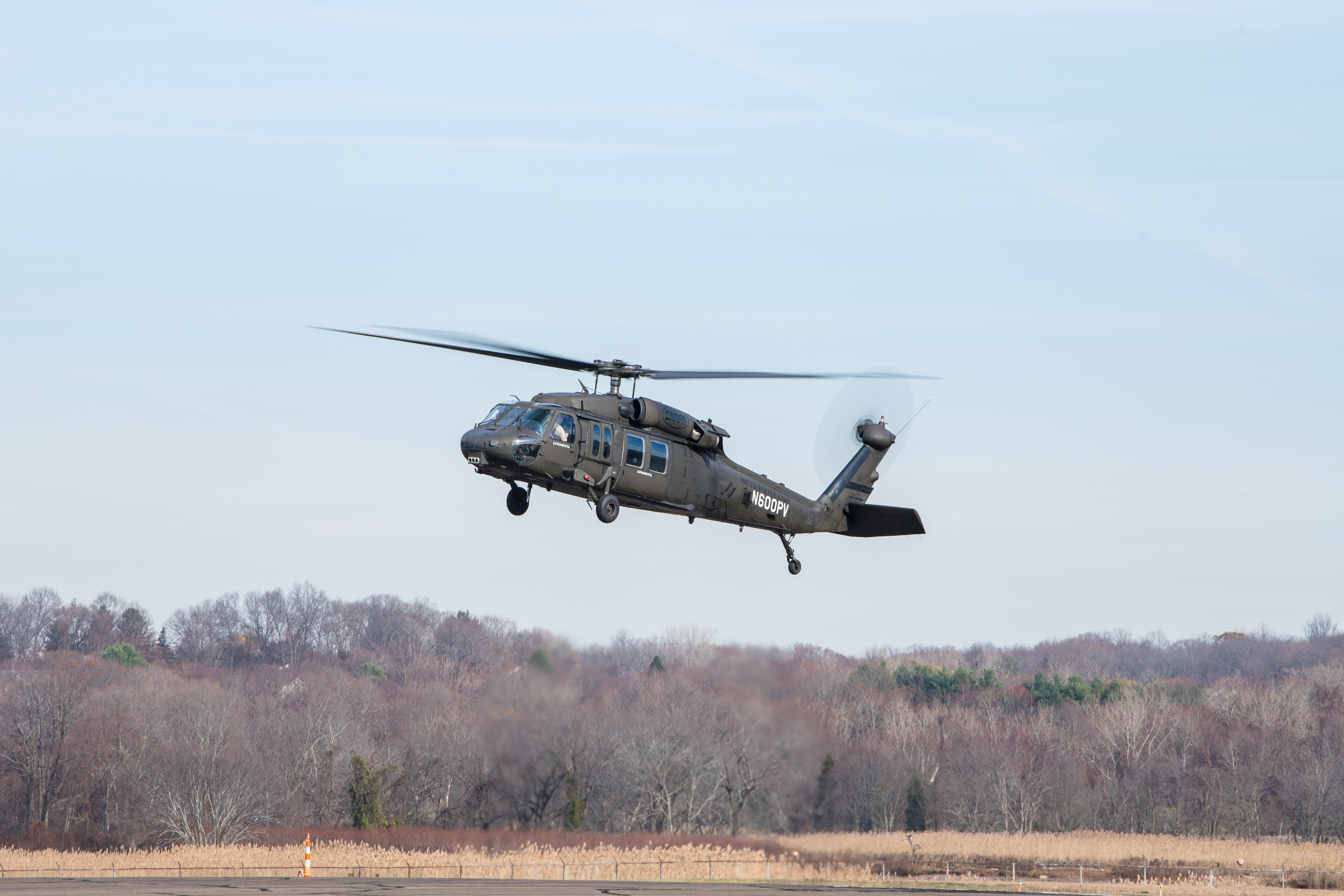U.S. Army plans to fly its experimental robotic Black Hawk in January without safety pilots in the cockpit, have been pushed to February.
Originally scheduled for January, the Defense Advanced Research Projects Agency (DARPA), which developed the autonomous flight control system installed on the aircraft, has been postponed because of logistics, an Army aviation spokesperson told Vertical on Dec. 22.
The flight is now scheduled for early February with rain check date set for later in the month if weather cancels the initial test flight, the Army spokesperson said.
Fresh off demonstrating what the Army calls its optionally piloted vehicle (OPV) Black Hawk at the weeks-long Project Convergence exercise in the fall, Army officials plan to remove the pilots from the cockpit completely and let the Sikorsky UH-60 fly itself. In the several test flights since it first flew in 2019, safety pilots have always “supervised” autonomous flight from the cockpit.

“We’re going to fly that Black Hawk uninhabited at Fort Campbell in January,” Maj. Gen. Walter Rugen, head of the Army’s Future Vertical Lift Cross Functional Team (FVL CFT), told Vertical in an interview earlier in December. “There were pilots in it out at Yuma” where PC 2021 took place, “but we’re going to un-inhabit it here next month.”
Developed by the DARPA, the OPV Black Hawk has an autonomous brain called the Aircrew Labor In-Cockpit Automation System. In the UH-60A, ALIAS putsd full-authority fly-by-wire flight controls in one of the oldest model Black Hawks in the Army inventory.
The aircraft is helping the Army test scenarios when it could use an autonomous helicopter, with much greater cargo and lifting capacity than a drone, to resupply troops in contact with the enemy. It is a Defense Department policy — at least for now — that troops will not be carried in the back without pilots in the cockpit.
“Obviously, we’re not putting anybody in the back,” Rugen said. “That’s way above my pay grade.”
Still, it’s possible that a robotic Black Hawk without any people on board could eventually drop off food, ammunition, water and other gear to troops in combat, and then perform medical evacuation of critically wounded troops.
“If you have an unmanned Black Hawk and you’re going to come in . . . that’s a lower risk event for any commander to go ‘I’m coming with an unmanned and we’re gonna give you all the resupply you need and then put your wounded on there.’ Those are the kinds of scenarios and concepts that we’re playing with see if there is any there, there.”
“What we see is the future potential of that and, if you have a very high-risk mission, and it goes into the dangerous stuff, I’ve always said, ‘We got to go into the breach, why not go in unmanned and lessen the risk?’” Rugen added.
Aside from performing autonomous resupply missions, the Army is testing out other uses for autonomous aircraft. Also during PC21, twin ALTIUS 600 fixed-wing drones were launched from and controlled by the aircraft, becoming a second and third set of sensors feeding the helicopter and troops on the ground reconnaissance data.
Removing pilots completely is not necessarily the point, Rugen said. Much like Sikorsky’s Matrix technology program — which was funded through DARPA’s ALIAS effort — the technology can act as a robotic copilot, reducing pilot workload and enabling safer, more efficient flight.
Sikorsky flies Matrix aboard its Sikorsky Autonomy Research Aircraft (SARA) — a customized S-76B — and worked with DARPA to retrofit the kit onto the optionally piloted UH-60A Black Hawk. While the test aircraft is a UH-60A, the ALIAS kit is retrofittable and Sikorsky hopes the Army will install it on other rotorcraft platforms in its inventory.
“We want to get to the optimally manned and optionally manned aspects of how we may want to fight in the future,” Rugen said. “And we want those technologies to be able to do that.”









